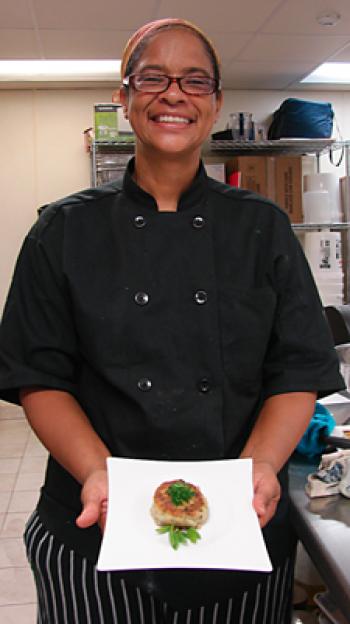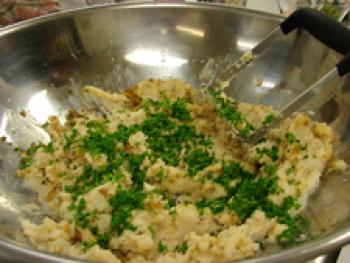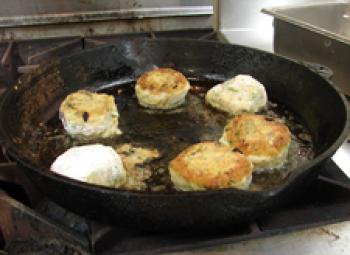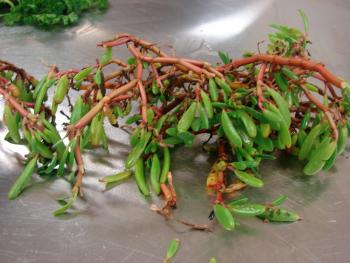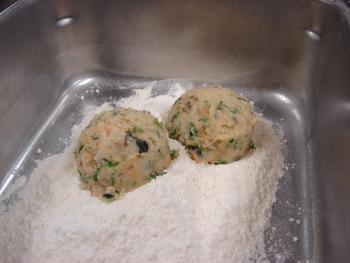What's Cooking in... Bermuda
This item appears on page 48 of the January 2020 issue.
Before going to Bermuda in July 2019, I searched the internet for a place to take a cooking class or see a cooking demonstration there. I ended up booking a unique experience with Doreen Williams-James of Wild Herbs N Plants of Bermuda (St. George’s, Bermuda; phone, in US, 441 335 1958, wildherbsnplantsofbda.com).
Doreen calls herself a forager, an expert in locating and preparing foods that grow in the wild. Foraging runs in the family; she learned from her father.
Mostly, Doreen makes and sells a variety of food products — such as cookies, jams and juices — from items she has foraged, and she makes everything on order, so it’s always fresh. (For anyone planning to purchase her products during a visit to Bermuda, I suggest you preorder them so she can have them ready for you.)
She also leads “Wild Edible Tasting Tours” (from $35 per person) and holds cooking demonstrations, using recipes from her father or of her own making.
St. George’s is a UNESCO World Heritage Site, and I met with Doreen in town at the World Heritage Centre (Admiral’s Walk, 16 Water St.; phone 441 297 8043, stgeorgesfoundation.org), where she often does cooking demos.
The World Heritage Centre is located in the Queen’s Warehouse, a building constructed in 1860 that once served as a cotton warehouse. The pulley system used to lift the cotton bales imported from the southern United States is still visible in the center of the building.
The multifunctional building contains an Orientation & Exhibit Gallery on the main floor with interpretive and interactive exhibits. There is also the Second-Hand Rose Shoppe, loaded with “gently used” secondhand “treasures” — a great place to look for a unique memento of Bermuda to take home.
Upstairs are three exhibition rooms, one showing the short film “A Stroll Through St. George’s,” which is helpful when planning a walking tour of the town. Several brochures are also offered, including one on a self-guided walking tour. The World Heritage Centre is a perfect place from which to start a tour.
As for Doreen’s cooking demonstrations, the cost to attend one is usually $65, but I was fortunate because she offered to show me, free of charge, how to make Sea Purslane Fish Cakes.
I was not too keen on the fish part, but the finished product was excellent and didn’t contain fish at all. Instead, it made use of sea purslane, succulent perennials found along the coast in many regions of the world. They look a little like small snap peas.
Because purslane is high in Omega-3 fatty acids and another antioxidant, beta carotene, along with many minerals, it is good for your health. It also makes an excellent snack. Eaten plain, the plants were not at all fishy but a bit salty and crunchy, with a delicate lemony taste and a mild peppery kick.
Here is how to prepare the “fish” cakes.
Sandra Scott can be reached by email at sanscott@gmail.com.
Sea Purslane Fish Cakes
Olive oil as needed
1 cup chopped onions
2 tsp chopped thyme
1½ tbsp vegetable bouillon
1 can each of cannellini beans and chickpeas, drained & rinsed
6 potatoes, peeled & boiled
½ cup chopped parsley
4 seaweed sheets (nori)
Handful of sea purslane, chopped finely
Flour as needed
Sauté chopped onions in a tablespoon of olive oil until lightly brown, and add chopped thyme and bouillon. Mash cannellini beans, chickpeas and potatoes in a bowl. Mix in sautéed onions, parsley, crushed seaweed sheets and chopped sea purslane and roll into 2-inch balls. Roll balls in flour until evenly coated. Flatten into patties about 1 inch thick. Heat frying pan to medium-hot, with enough olive oil to cover bottom of pan. Fry patties until golden brown, about 2 minutes on each side. Makes 12-15 cakes.

